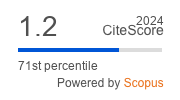Editor's preface
Abstract
PREFACE
In today’s rapidly changing society, psycholinguistics tends to be more proactive, since it does not simply respond to new realities of life by designing models or theories. Currently psycholinguistics has full potential not only to survive or to overcome elitist attitudes in science; it can also regain its status as a “modern” approach, for the new demands of the 21st century (Slama-Cazacu 2007). Psycholinguistics confronts social and political issues, including terrorism, acts of violence or war. And it is highly desirable that these issues should be the categories of irrealis (Łyda 2007). Regrettably, as Collin Meissner acknowledged, “language is often employed as a political, military, and economic resource in cultural, particularly colonial, encounters... call it a weapon” (Meissner 1992:164). Psycholinguistics should deal with this weapon of mass destruction (WMD), since this branch of science derived from the reality of language (behavior) and human communication. Of course, words create different worlds. But the fact remains that words can provide links between worlds. From this standpoint, language is likely to be a weapon of mass construction (WMC) – a tool for creating hope, love, tolerance, and peace, among people.
Psycholinguists from Argentina, Norway, Poland, Russia, and Ukraine, who are published in this volume, clearly know how to use the power of words in the cause of truth, peace, and justice. The scholars’ findings are aimed at erasing the dividing lines between people by learning their current needs, motives, emotions, and cognitions expressed in and through language.
The contributions of this volume issue 1 are focused on academic and language acquisition issues, bilingualism (Svitlana Buchatska, Iya Hordiyenko-Mytrofanova, Oleksandr Kapranov, Artem Sypko), individual speech activity (Natalya Fomina, Larysa Kalmykova, Anna Leyeva, Maryna Orap), clinical and pathological psycholinguistics (Janna Glozman, Olesia Turchak, Larysa Zasiekina), social and mass media linguistics, text and discourse, cognitive psycholinguistics (Nataliya Chmil, Diana Kalishchuk, Larysa Kompantseva, Oleksandr Lazuka, Laryssa Makaruk, Olena Savchenko, Nataliya Savelyuk), gender- and ethno-psycholinguistics (Geraldine Borovinsky, Julia Carden, Julieta Fumagalli, Oksana Kykhtiuk, Facundo Manes, Macarena Martínez-Cuitiño, Diego Shalóm, Oksana Solovey, Federico Soriano).
Hopefully, these papers will attract a wide array of readers who take an interest in the issues, since the authors have demonstrated clearly that psycholinguistics today is able to create a WMC by using words to build bridges between worlds.
References
- Łyda, A. (2007). Irrealis as a constraint in English-Polish interpreting. In: Challenging Tasks for Psycholinguistics in the New Century. (pp. 192-201), Janusz Arabski, (ed). Katowice: University of Silesia.
- Meissner, C. (1992). Words between worlds: the Irish language, the English army, and the violence of translation in Brian Friel's Translations. Colby Quarterly, 28(3), 164-174.
- Slama-Cazacu, T. (2007). Psycholinguistics, where to in the 21st century? In: Challenging Tasks for Psycholinguistics in the New Century. (pp. 77-85), Janusz Arabski, (ed). Katowice: University of Silesia.
Serhii Zasiekin,
Editor-in-Chief







 Creative Commons «Attribution» 4.0
Creative Commons «Attribution» 4.0